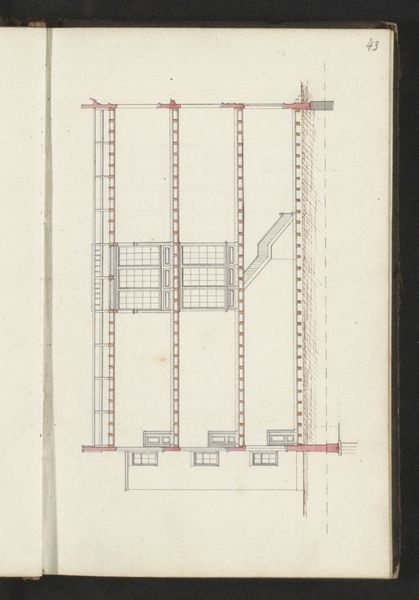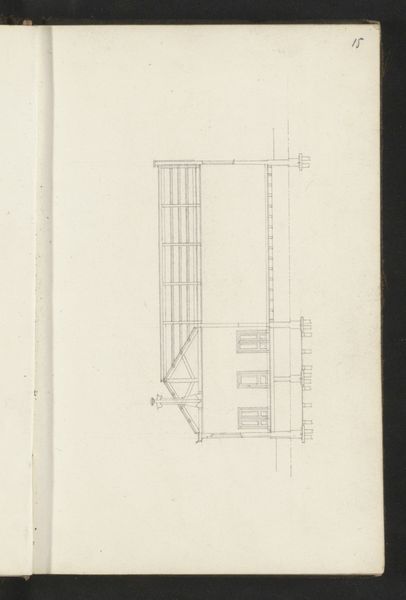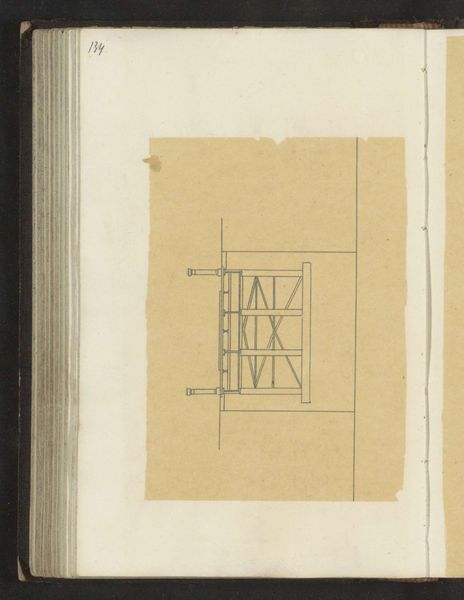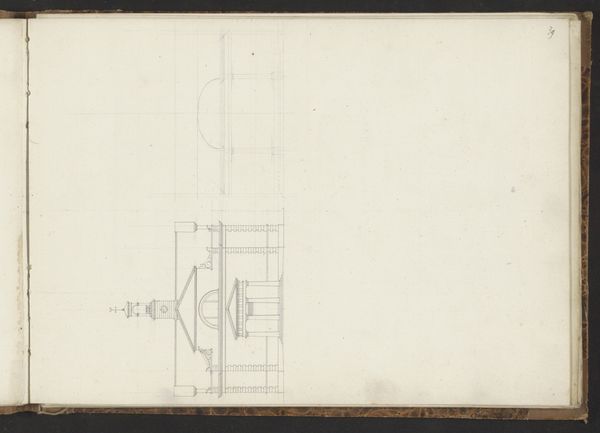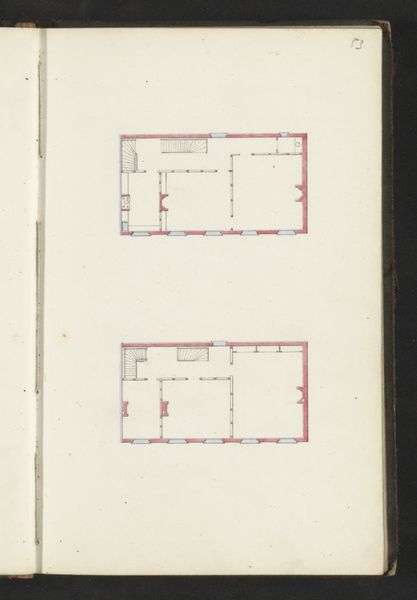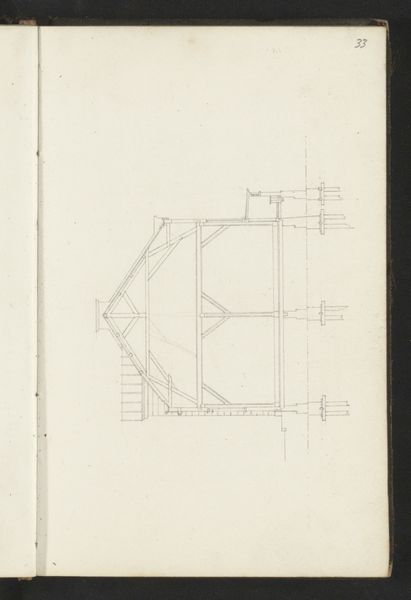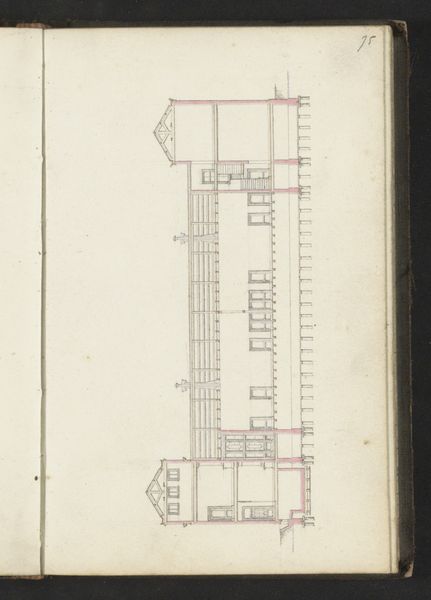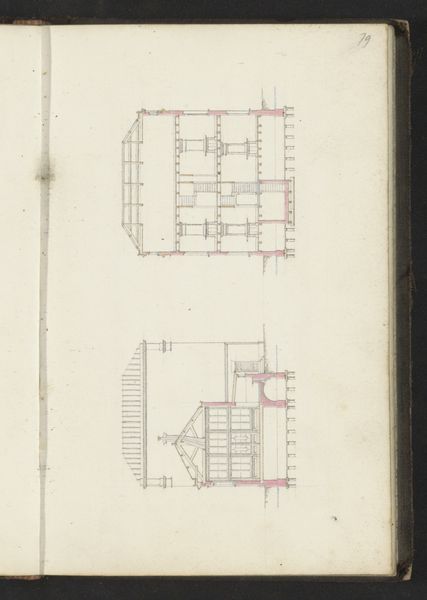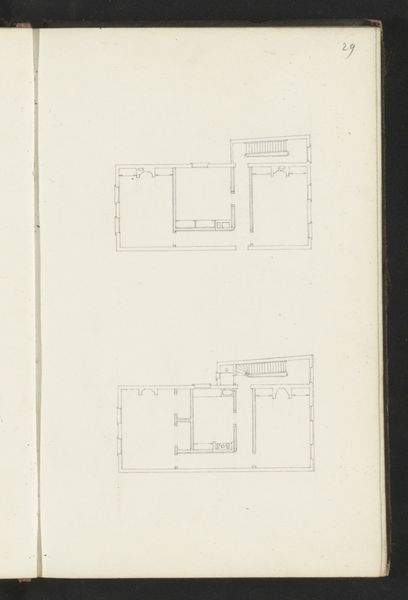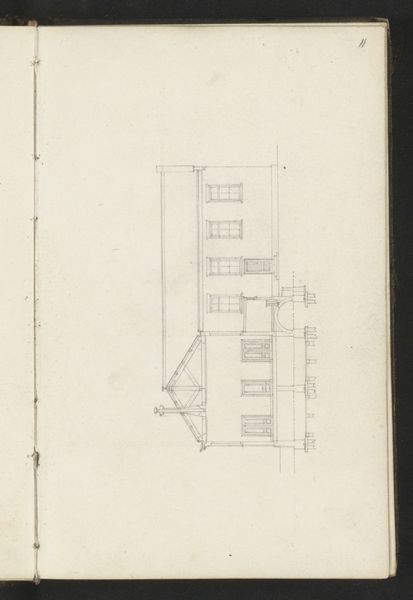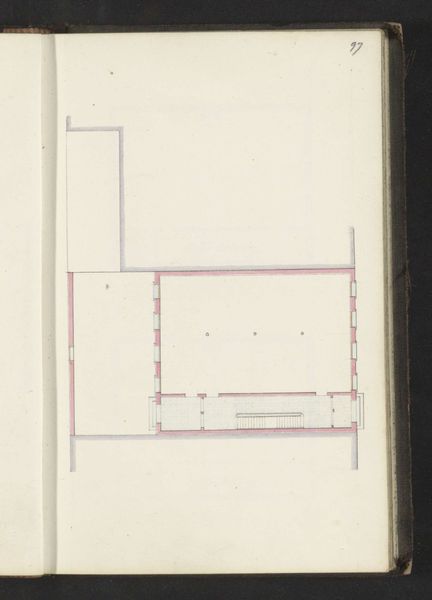
drawing, pencil, architecture
#
drawing
#
geometric
#
pencil
#
line
#
academic-art
#
architecture
Copyright: Rijks Museum: Open Domain
Curator: Here we have Willem Springer Jr.’s “Doorsnede van een gebouw,” or “Section of a Building,” made around 1864. It’s a pencil drawing. Editor: The precision! It's stark but also has a certain fragile beauty. It makes me think of technical blueprints, or an architectural elevation rendered with painstaking attention. The hand drawing gives a different feel to our digital drawings. Curator: Springer’s work demonstrates that academic attention to line—evident here—is deeply intertwined with the architectural styles prevalent at the time. I can see an interest in structural elements as symbolic features. It may seem odd but even walls speak a symbolic language. Editor: It’s interesting you bring up the material language of walls, given the materials used in production. Look closely at the pencil strokes. The graphite itself bears witness to a culture of drawing dependent on readily accessible, mass-produced supplies. You have here paper and pencils used by those being taught drawing techniques. Curator: Absolutely, the very availability and standardization of architectural materials influenced what could be built and, in turn, what the built environment communicated to its inhabitants about power, order, and even aspiration. This line technique feels especially "academic" given how much of academic art had become a matter of pedagogy and its reliance on models. Editor: So true. And think about the hands that likely touched this paper, the draftsmen, the teachers, even students, contributing to a cycle of creation and consumption inherent to the material. It's such a good study of the relationship between high design and every day material access and labor. Curator: Yes! It almost demands one reconsider buildings not just as containers for life, but as palimpsests bearing the material and symbolic weight of their conception. Thank you! Editor: Likewise, it's incredible how such minimal lines and shades invoke such powerful thoughts!
Comments
No comments
Be the first to comment and join the conversation on the ultimate creative platform.
